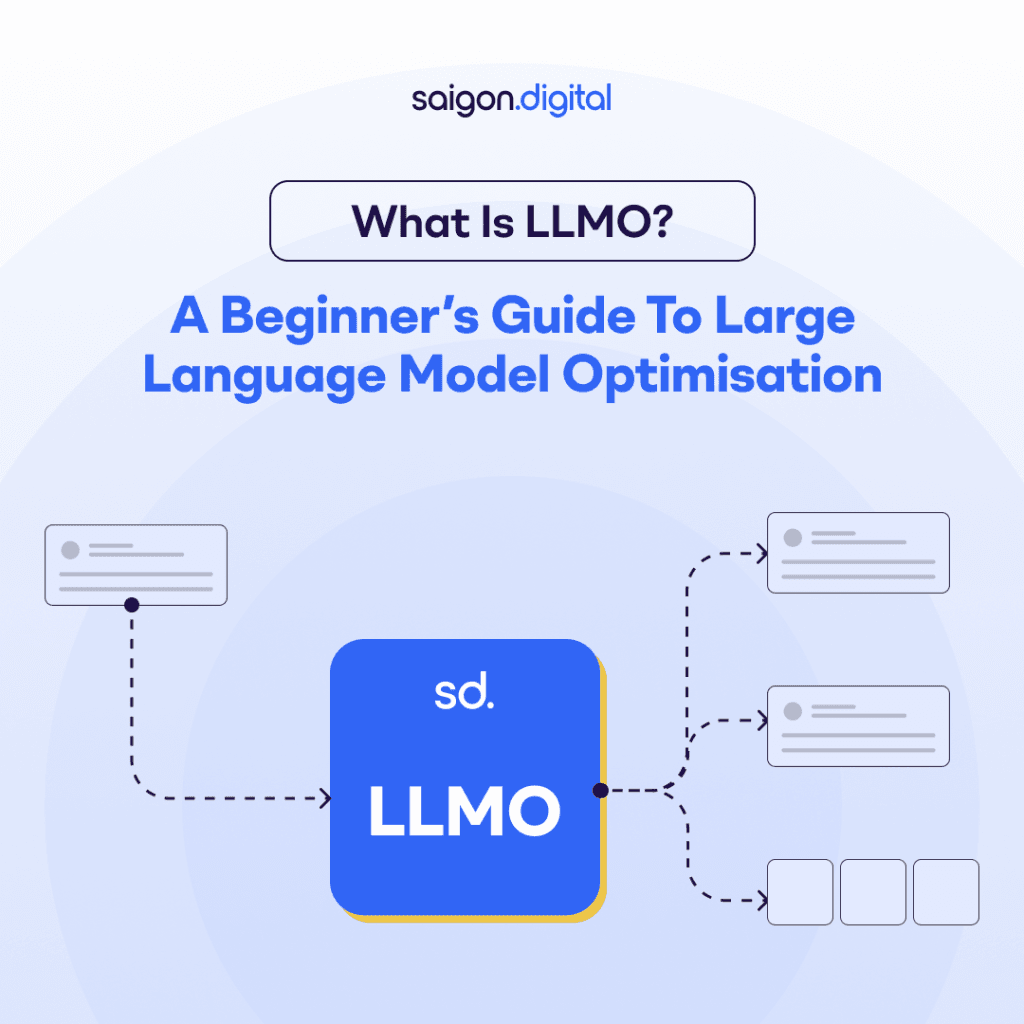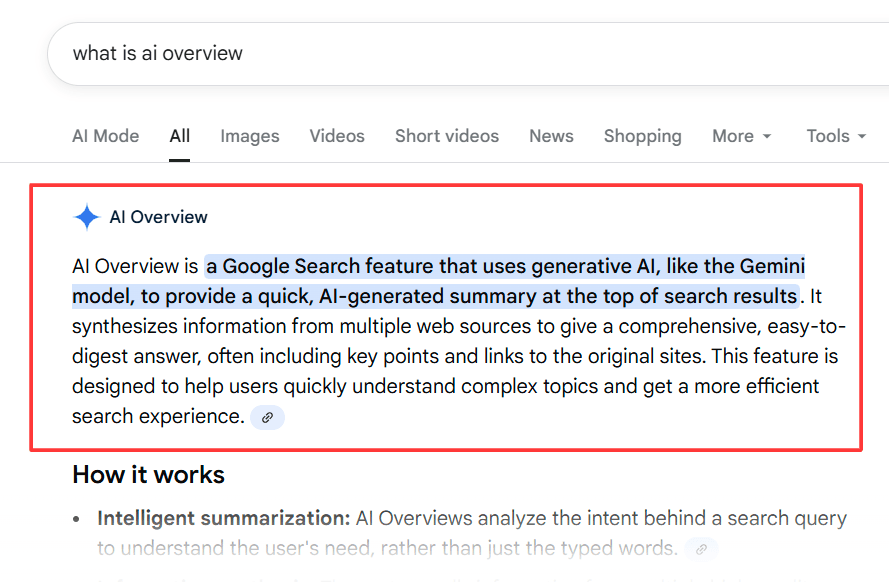
Why LLMO Matters Now
Traditional SEO has long focused on helping websites rank in search engine result pages (SERPs). But increasingly, users are turning to conversational, AI-powered assistants (ChatGPT, Google AI Overviews , Gemini, Claude, Perplexity and so forth) to get direct answers rather than click through link after link. In such contexts, content that is not just visible on a web page but also pickable, quotable and trusted by large language models can gain an advantage. That is the domain of LLMO.What is LLMO?
LLMO (Large Language Model Optimisation) refers to the set of strategies and best practices designed to increase the chances that content is understood, retrieved, and cited by large language models (LLMs) when they generate answers. In short, LLMO is like SEO for the AI era: the goal is not just to rank, but to be used by the AI itself. (Some also use terms like GEO (Generative Engine Optimisation) or AI SEO, though they overlap heavily with LLMO concepts.)
How LLMO Differs from Classic SEO (and How They Intersect)
To avoid confusion, it’s useful to draw a comparison between traditional SEO and LLMO, and to see where they complement each other. Dimension Traditional SEO LLMO Primary objective Achieve high ranking on search engines (Google, Bing, etc.) Be selected, cited, or used within AI-generated responses Key signals Keywords, backlinks, domain authority, CTR, on-page SEO Semantic clarity, entity linking, structured data, trust signals Optimisation focus Page-level, site-level, backlink strategy Passage-level, fragment-level, context embedding Metrics & success Impressions, clicks, ranking positions AI citations, brand mentions, referral traffic from AI sources Time horizon Medium to long (weeks to months) Possibly longer (as AI models evolve) In practice, you don’t abandon SEO when doing LLMO. Rather, you augment SEO with extra layers of structure, clarity and credibility to make your content “AI-friendly.” LLMO leverages many of the same foundations as SEO but with a sharper focus on how AI models parse, summarise and quote content.Key Principles of LLMO (for Beginners)
Here are fundamental principles to guide your approach to LLMO:1. Write with Clarity and Structure
LLMs are sensitive to how content is structured and semantically clear. Therefore, you should consider:- Use short to medium-length sentences (e.g. 8–25 words) and avoid overly nested clauses.
- Use headings, subheadings, lists and answer-first format (i.e. state the answer, then elaborate).
- Focus each paragraph on one idea. Avoid mixing multiple loosely related ideas in the same paragraph.
2. Emphasise Semantic Richness and Entity Clarity
LLMs thrive when they recognise clear entities (brands, products, people, places) and relationships among them. Making use of this information, be sure to:- Use clear, unambiguous naming of entities (e.g. “Saigon Digital, an SEO agency in HCMC”)
- Where relevant, define terms, use consistent references and link related works or pages
- Use schema markup (JSON-LD, structured data) for FAQs, how-tos, product details etc., so AI retrieval systems can more confidently parse your content
3. Build Topical Authority and Depth
AI models prefer to draw from sources that demonstrate depth and consistency:- Create clusters of content around key subjects (pillar pages + supporting articles)
- Use internal linking thoughtfully to reinforce thematic connections
- Update content over time to keep it fresh, relevant and expanding in depth
4. Earn External Signals of Authority
LLMs may implicitly favour sources with strong reputation, mentions or backing in other trusted domains:- Acquire citations, guest posts or mentions on reputable sites in your industry
- Maintain strong citation practices, use references, data sources, external links
- Cultivate consistent brand presence so AI models “learn” to associate your brand with certain subject areas
5. Monitor and adapt as AI evolves
Because LLMO is still nascent, continuous monitoring is essential:- Track whether your content is being referenced or cited by AI-based tools
- Monitor referral traffic from AI platforms
- Experiment with small changes (heading reorders, schema tweaks) and observe effects
- Stay abreast of changes in AI retrieval and summarisation methods in the industry
A Step-by-Step Beginner’s Guide to LLMO for Your Website
If you’re starting from scratch (or shifting from SEO to an AI-inclusive mindset), here is a practical roadmap:Step 1: Audit your content through “AI-lens”
Go through your existing content and ask:- Are my sentences clear, precise, well structured?
- Do I introduce and define key entities (brands, terms, people) with clarity?
- Do I use headings, lists, FAQ or structured sections?
- Do I interlink in a way that reinforces subject breadth?
Step 2: Create a content cluster strategy
Pick a core theme (e.g. “digital marketing in HCMC”, “SEO tactics for AI era”) and plan:- A pillar / master guide page
- Supporting articles that explore subtopics
- Interlinking and cross-referencing among them
- Make sure each article has strong clarity, structure, entity mentions
Step 3: Add or refine structured data & schema
Implement or refine structured data (JSON-LD) in your key pages:- FAQs
- How-to steps
- Product or service schema
- Organisation / brand schema

Step 4: Earn authoritative citations
Begin or improve your digital PR efforts:- Guest posts or contributions on reputable sites
- Industry interviews, case studies, reports
- Getting your content cited by others
- Promoting content so that it’s shared and referenced
Step 5: Test small experiments & measure
Pick a few pages and run controlled experiments:- Change heading phrasing
- Reorganise sections (e.g. put a key answer higher)
- Add or adjust schema markup
- Add more entity clarity or internal links
- Whether AI chat tools reference or quote your content
- Referral traffic coming from AI interfaces
- Any brand mentions or queries that you can trace back





